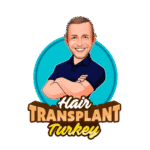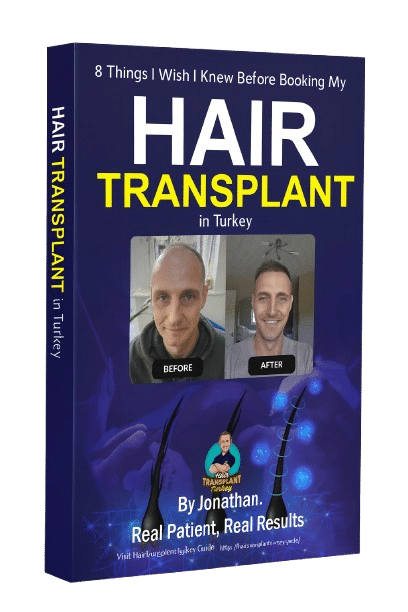When you’ve just had a hair transplant, those first few days are filled with a mix of excitement and nerves. I remember stepping out of Clinicana Hair Transplant & Esthetic Surgeries in Istanbul — feeling relieved it was done but also slightly paranoid about doing something that might harm the new grafts.
One of the first things I asked my patient coordinator was: “How do I wash my hair now? And what about sleeping or going outside?”
These might seem like small details, but in reality, how you handle washing, sleeping, and sun exposure during recovery can make a huge difference to your final result. In this guide, I’ll walk you through what I learned firsthand after my own procedure in Turkey — alongside expert recommendations from trusted sources like the Mayo Clinic, ISHRS, and the British Association of Dermatologists.
If you’re preparing for your own transplant or recovering from one, this is everything you need to know.
Why Post-Transplant Aftercare Is So Important
After a hair transplant, every newly implanted graft is delicate. Think of each one as a tiny seed — if you disturb it too early, it won’t take root properly. During the first 10–14 days, these follicles are at their most vulnerable. The scalp is healing, and swelling, scabbing, or even minor trauma can impact graft survival.
In my own case, Clinicana’s team emphasized that aftercare is 50% of the result. Their process was reassuringly clear, starting with an in-clinic wash the day after surgery and daily check-ins through WhatsApp support.
Clinical studies back this up — for example, research published on PubMed reports an 85–90% graft survival rate when patients follow proper post-operative care routines. The principle is simple: the cleaner, calmer, and more protected your scalp, the stronger your new hair will grow.
Let’s start with the step most people worry about first — washing your hair safely.
How To Wash Your Hair After A Hair Transplant
When Can You Start Washing?
At Clinicana, the first wash was performed at the clinic on Day 1 after surgery. That initial clean was done by a nurse who gently applied a foaming solution to soften the scabs and reduce inflammation.
From Day 3 onwards, I was able to wash my hair myself at the hotel using the special post-op shampoo Clinicana provided. It was a mild, anti-inflammatory formula designed to soothe the scalp and encourage healing — and it actually lasted me about three months. That single bottle carried me right through the early healing phase.
According to the International Society of Hair Restoration Surgery (ISHRS), this approach is ideal: gentle, non-scrubbing washes reduce the risk of infection while keeping the grafts hydrated and clean.
Step-by-Step Washing Technique
Here’s exactly how I did it (and how the medical team taught me):
- Use lukewarm water, never hot.
- Pour a small amount of shampoo into your palm and foam it up with water.
- Apply the foam gently to your scalp — no direct contact with fingertips or nails for the first week.
- Let the foam sit for about 5–10 minutes to soften scabs.
- Rinse carefully using a cup or very low-pressure shower stream.
- Air dry or pat gently with a soft paper towel.
That’s it. It’s simple, but consistency is what matters most.
Common Mistakes To Avoid
Even though it’s tempting, don’t scratch or pick at any scabs. They’ll fall off naturally within 7–10 days. Avoid regular shampoos that contain alcohol, parabens, or sulfates — they can irritate the healing scalp. And never towel dry or rub your head during the first week.
Once I got used to the new routine, it became a relaxing part of the recovery process — a small daily reminder that healing was happening.
As the washing routine settled, another challenge arrived: how to sleep without damaging the grafts.
How To Sleep After A Hair Transplant
Sleeping might sound simple, but it’s one of the hardest parts of recovery. The key is to avoid swelling and friction on the newly transplanted area.
Best Sleeping Position
For the first 4–5 nights, I slept with my head elevated at about a 45-degree angle using two pillows and a travel neck pillow. It wasn’t the most comfortable setup at first, but it was worth it — keeping my head raised helped prevent swelling and stopped any accidental contact with the pillow.
Clinicana also gave me an anti-swelling headband, which helped keep fluids from moving down toward my face. I noticed that by night three, I could sleep much better without worrying.
Bedding Hygiene
Each night, I changed the pillowcase and placed a clean towel over it to catch any minor fluid or flakes from the scalp. The clinic recommended keeping the area clean but not sterile — the goal is to maintain a gentle, natural healing environment.
After a week, I was able to return to side sleeping, though I still avoided direct pressure on the transplanted area for the first 10 days.
Once sleeping became comfortable again, my next concern was sunlight — and that’s something many people underestimate.
Sun Exposure After a Hair Transplant
Why UV Protection Is Essential
Freshly transplanted follicles and donor areas are highly sensitive to UV rays. According to the Mayo Clinic and the European Academy of Dermatology and Venereology (EADV), ultraviolet radiation can delay wound healing and trigger unwanted pigmentation or inflammation.
I had my surgery in January, so the Turkish sun wasn’t too harsh, but Clinicana still told me to avoid direct sunlight for at least two weeks. They even advised me not to walk outside without a loose surgical cap.
Sunburn at this stage can permanently damage grafts — it’s simply not worth the risk.
When It’s Safe to Go Back in the Sun
- Weeks 1–2: Avoid all direct sunlight. Stay indoors or wear a light, loose cap if you must go out.
- Weeks 3–6: You can spend short periods outside but keep your scalp covered.
- After 3 months: Normal outdoor activity is fine, though using SPF 30+ on your scalp is still a good habit.
A good rule of thumb: if the sun feels strong enough to tan your skin, it’s strong enough to harm your healing grafts.
Protecting my scalp became second nature during recovery — and by being cautious early on, I avoided irritation altogether.
With washing, sleeping, and sunlight managed, I focused on the smaller habits that helped everything heal faster.
Additional Recovery Tips That Really Helped
A few extra things made a real difference for me during the first couple of weeks:
- Stay hydrated: Your body heals faster when it’s well hydrated.
- Avoid alcohol and smoking: Both can slow healing and affect blood flow to the scalp.
- Skip heavy exercise for at least 10 days. Sweat can irritate the grafts.
- Follow your clinic’s check-in schedule: Clinicana sent reminders at 1, 3, and 6 months for progress photos.
- Use their WhatsApp support: Anytime I had a question — from shampoo quantity to sleeping posture — they replied almost instantly.
These might sound small, but recovery is really about consistency. Healing is gradual, and patience pays off. By month three, I started seeing new growth, and by month seven, my hairline looked dense and natural.
Final Thoughts — Small Details, Big Results
Looking back, I’m glad I took Clinicana’s aftercare advice seriously. The combination of their gentle shampoo, clear washing guidance, and strict sun protection genuinely helped my grafts settle perfectly.
It’s easy to underestimate how much these small routines matter, but as I learned, the first two weeks are everything. Treat your scalp carefully, follow your clinic’s guidance, and you’ll be rewarded with strong, natural growth.
If you’d like to see exactly what my recovery looked like — from the first wash to full growth — grab my free guide, “8 Things I Wish I Knew Before Booking My Hair Transplant in Turkey”. It includes videos, photos, and real insights that I wish I’d had before booking my trip.
Your future self (and your hairline) will thank you.



 Continue with Google
Continue with Google